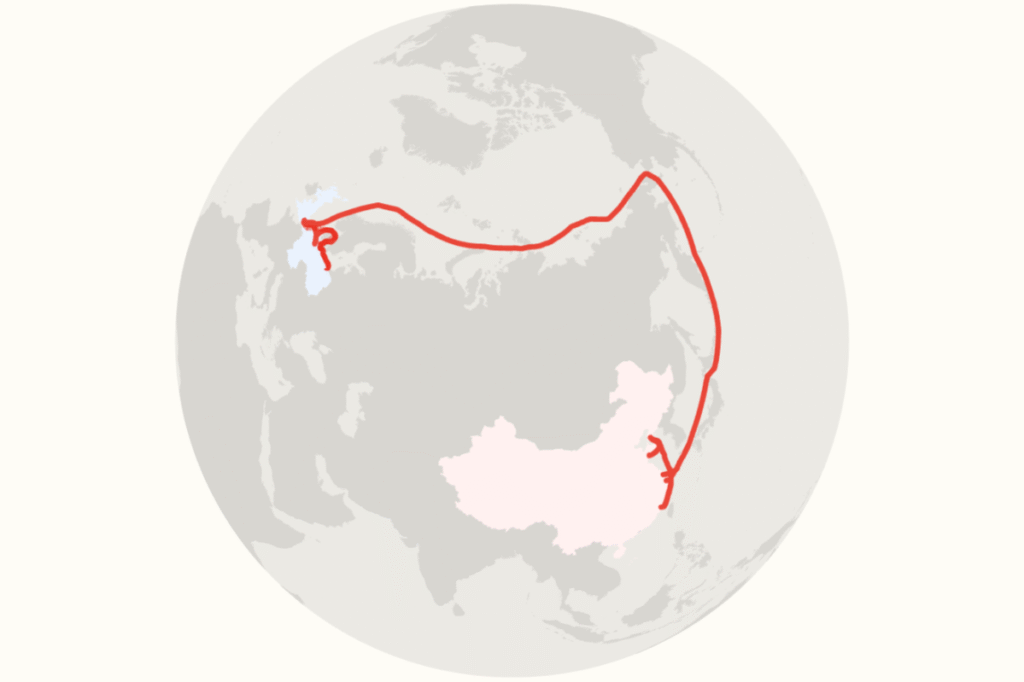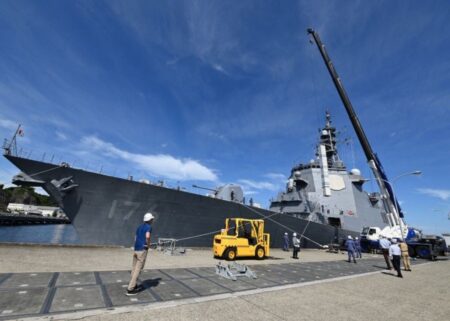A Chinese container ship has become the first to complete a China-to-Europe voyage along an Arctic shipping route dubbed the “Ice Silk Road.”
A map created by Newsweek traces the pioneering 26-day journey of the Istanbul Bridge from the coast of China to the heart of Europe, where it has called at ports in the Britain, Germany and Poland, and is expected to reach the Netherlands this week.
Why It Matters
The vessel arrived one week later than projected due to poor sea conditions, according to China’s state media. Nevertheless, the Arctic passage was two weeks faster than the traditional route via Egypt’s Suez Canal—the fastest sea corridor since the Victorian era—and half the time of the Cape of Good Hope route around South Africa.
The journey highlighted new and emerging opportunities for global trade as climate change thaws Arctic sea ice. The route—accessible only a few months per year—was previously impassable for merchant vessels.
Newsweek reached out to China’s Foreign Ministry and operator Sea Legend by email with requests for comment.
What To Know
Open-source ship-tracking data reviewed by Newsweek showed the Liberian-flagged ship, operated by Chinese-controlled container line Sea Legend, had departed from the port of Ningbo-Zhoushan in east China’s Zhejiang province on September 23.
The vessel approached the United Kingdom via the North Sea on October 14, docking at the port of Felixstowe. It then made stops in Hamburg, Germany, before reaching Gdansk, Poland, early Sunday morning. The Istanbul Bridge is expected in the Dutch port of Rotterdam later this week.
China’s state-owned Global Times newspaper, citing industry experts, said the “Arctic Express” route was now a third maritime corridor linking the world’s second-largest economy with Europe. They said it would further facilitate trade and reduce delivery times, especially for sensitive cargo.
China’s official Xinhua news agency said the Istanbul Bridge had reached its first stop in Felixstowe in just 20 days, faster even than the China-Europe freight train, which takes around 25 days.
What People Are Saying
Radek Pyffel, a senior analyst at Poland’s Sobieski Institute think tank, wrote on X: “Tonight, the container ship Istanbul Bridge docked in Gdansk after 26 days, in a time significantly shorter than via the Suez Canal…. With climate change and the introduction of new technologies, are we facing a revolution in global transport?”
The People’s Daily, the Chinese Communist Party’s flagship newspaper, quoted a Transport Ministry official as saying: “This is the world’s first container route through the Arctic specifically designed for cross-border e-commerce and high value-added goods. It is also a major achievement in the development of the ‘Ice Silk Road’ under the Belt and Road Initiative.”
What Happens Next
The route provides companies with another cargo option to Europe—including for high-tech cargo from China. Sea Legend’s CEO told The People’s Daily that the Arctic’s lower temperatures are ideal for shipping sensitive electronic components to Europe, where Chinese companies enjoy a commanding market share.
The voyage comes eight years after a natural gas tanker transited the Northern Sea Route without an icebreaker, and signals growing strategic implications as ice coverage continues to shrink.
These changes also extend into the security realm. The Arctic has emerged as a key arena in the U.S.-China rivalry, with Beijing—calling itself a “near-Arctic state”—and its close partner Russia stepping up their presence in the region.
Read the full article here














